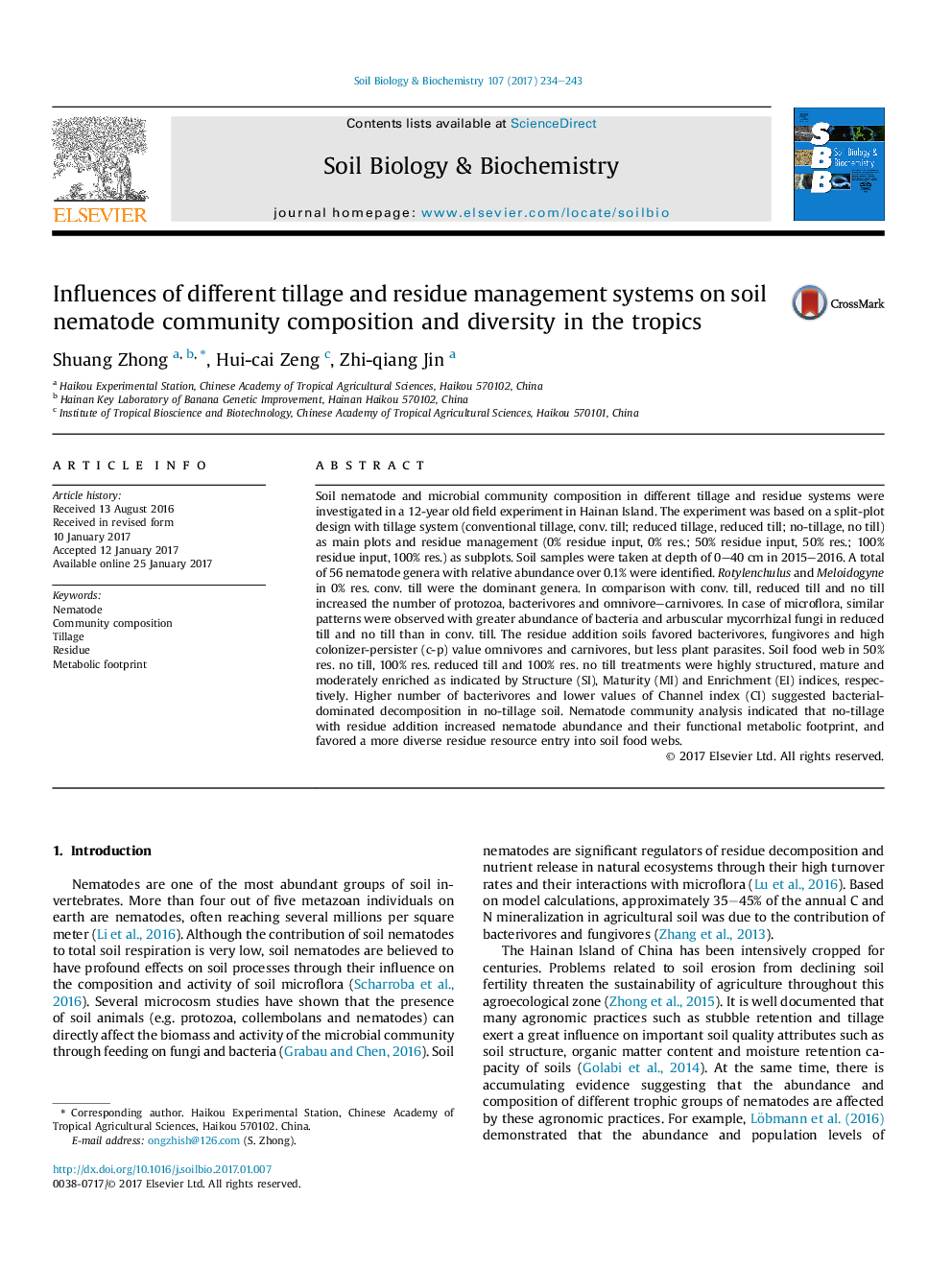| Article ID | Journal | Published Year | Pages | File Type |
|---|---|---|---|---|
| 5516434 | Soil Biology and Biochemistry | 2017 | 10 Pages |
â¢Zero or reduced tillage and residue addition increased nematode abundance and functional metabolic footprint.â¢Biomass of bacteria and fungi was strongly enhanced in zero or reduced tillage and residue input treatments.â¢Bacterial and predator-prey pathways were dominant in no-tillage and residue input practices.â¢Long-term no tillage and more diverse residue input reduced plant-feeding nematodes abundance.â¢The responses of soil nematodes to tillage and residue management were genus-dependent.
Soil nematode and microbial community composition in different tillage and residue systems were investigated in a 12-year old field experiment in Hainan Island. The experiment was based on a split-plot design with tillage system (conventional tillage, conv. till; reduced tillage, reduced till; no-tillage, no till) as main plots and residue management (0% residue input, 0% res.; 50% residue input, 50% res.; 100% residue input, 100% res.) as subplots. Soil samples were taken at depth of 0-40Â cm in 2015-2016. A total of 56 nematode genera with relative abundance over 0.1% were identified. Rotylenchulus and Meloidogyne in 0% res. conv. till were the dominant genera. In comparison with conv. till, reduced till and no till increased the number of protozoa, bacterivores and omnivore-carnivores. In case of microflora, similar patterns were observed with greater abundance of bacteria and arbuscular mycorrhizal fungi in reduced till and no till than in conv. till. The residue addition soils favored bacterivores, fungivores and high colonizer-persister (c-p) value omnivores and carnivores, but less plant parasites. Soil food web in 50% res. no till, 100% res. reduced till and 100% res. no till treatments were highly structured, mature and moderately enriched as indicated by Structure (SI), Maturity (MI) and Enrichment (EI) indices, respectively. Higher number of bacterivores and lower values of Channel index (CI) suggested bacterial-dominated decomposition in no-tillage soil. Nematode community analysis indicated that no-tillage with residue addition increased nematode abundance and their functional metabolic footprint, and favored a more diverse residue resource entry into soil food webs.
